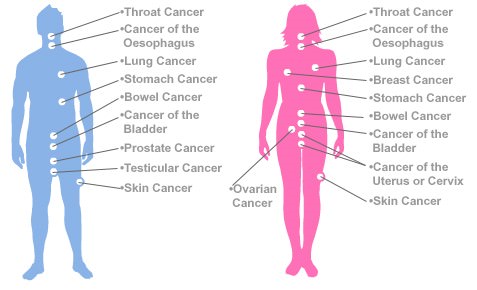CANCER & ITS TYPES
GOOD AFTERNOON BOYS.
MARK YOUR ATTENDANCE FIRST .
Today we will achieve the following LEARNING OUTCOMES:
Students will be able to -
1. Define cancer .
2. Differentiate between malignant & benign tumors .
3. Explain the causes of CANCER.
4. List the types of CANCER.
5. Enumerate on the treatment carried out to treat CANCER .
GENERAL INSTRUCTIONS :
1. Write your notes in your register .
2. There is only one YouTube video shared with this blog . Kindly watch it first before reading the blog .
3. Ask your doubts in our Official Watsapp group .

MARK YOUR ATTENDANCE FIRST .
Today we will achieve the following LEARNING OUTCOMES:
Students will be able to -
1. Define cancer .
2. Differentiate between malignant & benign tumors .
3. Explain the causes of CANCER.
4. List the types of CANCER.
5. Enumerate on the treatment carried out to treat CANCER .
GENERAL INSTRUCTIONS :
1. Write your notes in your register .
2. There is only one YouTube video shared with this blog . Kindly watch it first before reading the blog .
3. Ask your doubts in our Official Watsapp group .
Cancer
- Cancer is one of the most dreaded diseases of human beings and is a major cause of death all over the globe.
- More than a million Indians suffer from cancer and a large number of them die from it annually.
- The mechanisms that underlie development of cancer or oncogenic transformation of cells, its treatment and control have been some of the most intense areas of research in biology and medicine.
- In our body, cell growth and differentiation is highly controlled and regulated. In cancer cells, there is breakdown of these regulatory mechanisms.
- Normal cells show a property called contact inhibition by virtue of which contact with other cells inhibits their uncontrolled growth.
- Cancer cells appears to have lost this property of contact inhibition. As a result of this, cancerous cells just continue to divide giving rise to masses of cells called tumors.
Types of Tumors
- Tumors are of two types: benign and malignant.
- Benign tumors normally remain confined to their original location and do not spread to other parts of the body and cause little damage.
- The malignant tumors, on the other hand are a mass of proliferating cells called neoplastic or tumor cells. These cells grow very rapidly, invading and damaging the surrounding normal tissues.
- As these cells actively divide and grow they also starve the normal cells by competing for vital nutrients.
- Cells sloughed from such tumors reach distant sites through blood, and wherever they get lodged in the body, they start a new tumor there. This property called Metastasis is the most feared property of malignant tumors.
Causes of Cancer
- Transformation of normal cells into cancerous neoplastic cells may be induced by physical, chemical or biological agents. These agents are called carcinogens.
- Ionizing radiations like X-rays and gamma rays and non-ionizing radiations like UV cause DNA damage leading to neoplastic transformation.
- The chemical carcinogens present in tobacco smoke have been identified as a major cause of lung cancer.
- Cancer causing viruses called oncogenic viruses have genes called viral oncogenes.
- Furthermore, several genes called cellular oncogenes (c-onc) or proto oncogenes have been identified in normal cells which, when activated under certain conditions, could lead to oncogenic transformation of the cells.

Cancer Detection and Diagnosis
- Early detection of cancers is essential as it allows the disease to be treated successfully in many cases.
- Cancer detection is based on biopsy and histopathological studies of the tissue and blood and bone marrow tests for increased cell counts in the case of leukemias.
- In biopsy, a piece of the suspected tissue cut into thin sections is stained and examined under microscope (histopathological studies) by a pathologist.
- Techniques like radiography (use of X-rays), CT (computed tomography) and MRI (magnetic resonance imaging) are very useful to detect cancers of the internal organs.
- Computed tomography uses X-rays to generate a three-dimensional image of the internals of an object.
- MRI uses strong magnetic fields and non-ionising radiations to accurately detect pathological and physiological changes in the living tissue.
- Antibodies against cancer-specific antigens are also used for detection of certain cancers.
- Techniques of molecular biology can be applied to detect genes in individuals with inherited susceptibility to certain cancers. Identification of such genes, which predispose an Individual to certain cancers, may be very helpful in prevention of cancers.
- Such individuals may be advised to avoid exposure to particular carcinogens to which they are susceptible (e.g., tobacco smoke in case of lung cancer).
Treatment of cancer
- The common approaches for treatment of cancer are surgery, radiation therapy and immunotherapy.
- In radiotherapy, tumor cells are Irradiated lethally, taking proper care of the normal tissues surrounding the tumor mass.
- Several chemotherapeutic drugs are used to kill cancerous cells. Some of these are specific for particular tumors. Majority of drugs have side effects like hair loss, anemia, etc.
- Most cancers are treated by combination of surgery, radiotherapy and chemotherapy.
- Tumor cells have been shown to avoid detection and destruction by immune system. Therefore, the patients are given substances called biological response modifiers such as a-interferon which activate their immune system and help in destroying the tumor.
THAT'S ALL FOR TODAY .
ALL THE BEST FOR NEXT EXAM.
NO HOME WORK TASK .

Good Morning Ma'am
ReplyDeleteGood morning, ma'am
ReplyDeletethis is Gauravya
good morning ma'am
ReplyDeleteGood morning ma'am
ReplyDeleteGood morning maam
ReplyDeleteGood morning ma'am
ReplyDeleteGood morning ma'am
ReplyDeleteGood morning ma'am
ReplyDeleteGood morning ma'am
ReplyDeleteGood morning ma'am
ReplyDeleteGood morning ma'am
ReplyDeleteGood morning ma’am Raman
ReplyDeleteGood morning ma'am
ReplyDeleteGood morning ma'am
ReplyDeleteGood morning ma'am
ReplyDeleteAnubhav Andrews
Good morning ma'am
ReplyDeleteGood morning ma'am
ReplyDeleteGood afternoon ma'am
ReplyDelete